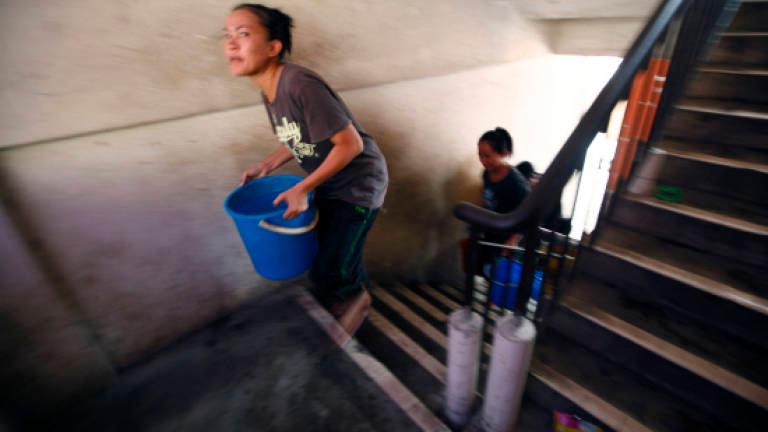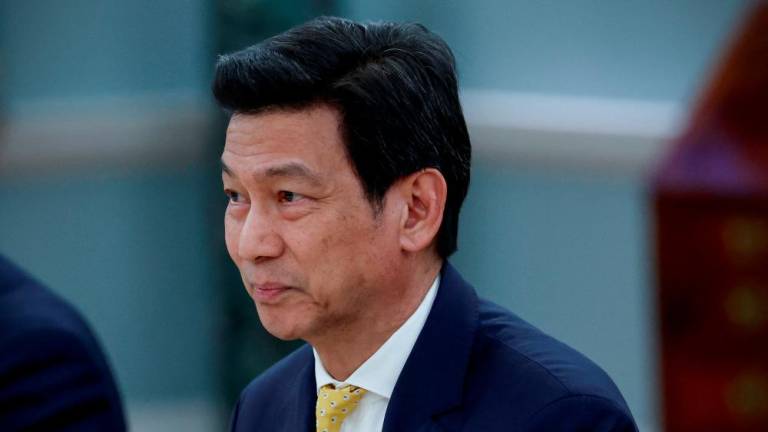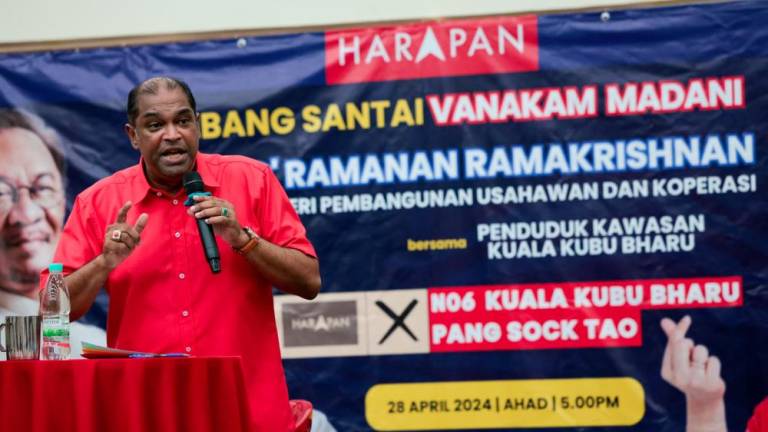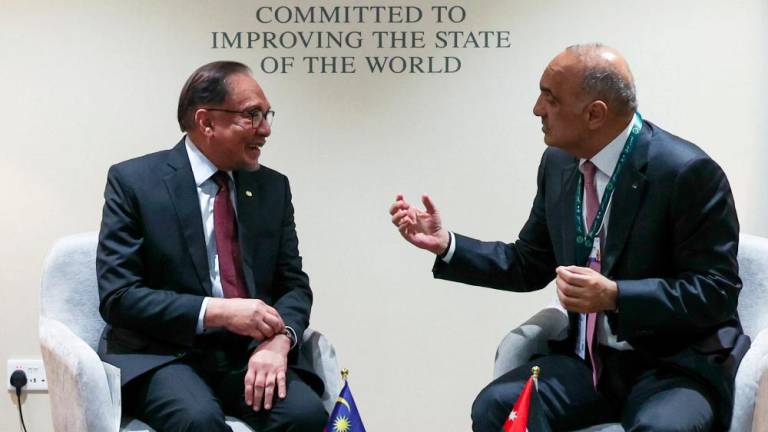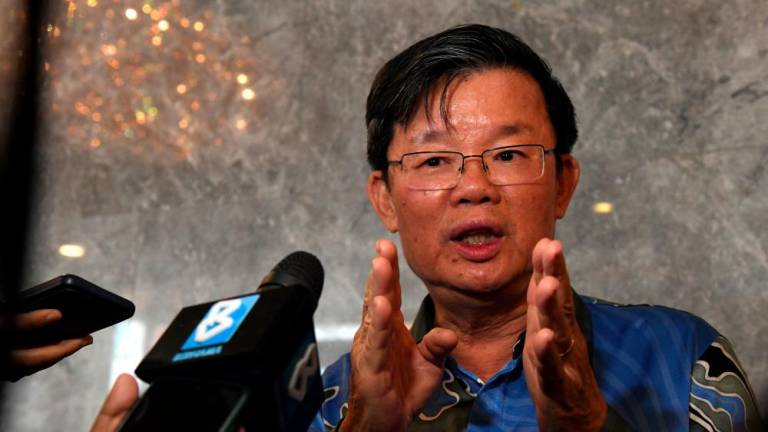WATER and sanitation security is becoming increasingly important as scarcity worsens owing to a variety of issues that demand immediate attention and continue to harm millions of vulnerable people worldwide.
The topic is critical and it has been repeatedly predicted that it will be at the centre of a future geopolitical conflict.
The United Nations has established the sustainable development goal initiative of clean water and sanitation.
An agenda promising to achieve its core principles by 2030, spanning its vision to champion universal and equitable access to safe and affordable drinking water for all.
However, is this supposed vision feasible when the Middle East and Africa regions have the greatest expected economic losses from climate-related water scarcity, estimated at 6% to 14% of GDP by 2050?
Despite the agenda that pledged allegiance to promoting water efficiency, my interjections extend to mentioning that more than five billion people could suffer water shortages by 2050 due to climate change, increased demand and polluted supplies, according to a UN report on the state of the world’s water.
While taking the appearance of feasibility, these developmental strategies’ downsides are discernible as it seemingly lacks quantitative comprehension of a future economic crisis and geopolitical issues.
A potential global recession or a denigration of water infrastructure could see this very agenda succumb to the ramifications of water scarcity.
There are possibly three dimensions by which the issue may be analysed: water as an economic problem following a potential financial crisis, worldwide geopolitical issues concerning clean water supply and domestic issues that result in poor infrastructure and resource allocation.
Access to clean water and sanitary products and facilities continues to be a problem due to scarcity as it is a natural resource which, when constrained by multiple factors, can increasingly edge closer towards dangerous levels of near depletion.
The following are quantitative statistics that arrive at a consensus that is deeply worrying, conducted by the global outreach establishment United Nations Children’s Fund and a plethora of other human development and strategic institutions: “844 million people don’t have clean water.” “2.3 billion people don’t have a decent toilet.” “31% of schools don’t have clean water.” “Diseases caused by dirty water and poor toilets kill a child under five every two minutes.”
Around the world up to 443 million school days are lost every year because of water-related illnesses.
However, it would be factually inconsistent and incorrect to postulate the exact idea that concludes that water inaccessibility is decreasing in all places of the world.
According to projected statistics in 2015, most nations significantly improved their water accessibility in more than 90% of their households.
This marks significant progress since 1990 when most countries across Latin America, East and South Asia, and Sub-Saharan Africa were often well below 90%.
Access remains lowest in Sub-Saharan Africa where rates typically range from 40% to 80% of households.
Despite this, however, the global reservoir of water accessibility is still at a shameful 35% according to world data.
To understand the progression behind the very propinquity of water management in sanitation, one has to refer to the efforts of the World Health Organisation which established the “Water Safety Plan”, which had an emphasis on strengthening socio-political awareness in communities about water sanitation through the use of the regulatory policy.
However, the measures that have been taken require new plans to tackle the issue of economic unpredictability specifically following the Covid-19 pandemic.
When analysing the recommended policy analysis of world economic institutions, it has been emphasised that the economy has, nevertheless, seen a significant progression from the detrimental effects of the global economic and financial catastrophe in 2009.
The worldwide economic situation, worsened by the global pandemic and disrupted supply chains, has brought the world closer to a recession.
This would be the weakest annual growth rate since 2009 when global output was shrinking at an annualised rate of 3%.
This potentially depreciates the efforts of worldwide institutions that have chosen to implement policy and introduce greater sums of monetary investments in improving the overall condition of water sanitation through developmental technology and infrastructure, which means there will be a deficit in funding.
The second issue that requires circumvention rests on the shoulders of those who helm current global affairs and the geopolitics concerning clean water supply and universal nourishment.
There is an evident denigration of water infrastructure in Sub-Saharan Africa, and Middle-Eastern and Central Asian Countries despite worldwide interference, exacerbated by nation-to-nation conflict.
This is then worsened due to the absence of adequate supportive governance in sustaining an advancement in water storage, distribution and sanitary facilities.
There must be an increased international effort to mediate international conflict in these areas and provide means of supportive governance and aid to ensure that the necessary access to clean water and sanitation can be achieved.
Potential global conflict over this particular resource will inevitably halt if there is increased international effort in introducing sustainable policies, which overcome the challenges brought about by geopolitical tensions and domestic strife.
Widespread poverty and degradation will inevitably result if conflict-ridden areas over the issue of clean water and sanitation continue to grow in intensity.
This only serves as a catalyst for oncoming global conflict over water, as a depleting natural resource.
Geopolitical issues such as India’s posturing to develop a dam for energy-efficiency purposes in the Ganges River have for instance been a historically tendentious issue with Bangladesh.
According to the United Nations Educational, Scientific and Cultural Organisation, the current interstate conflicts over clean water occur mainly in the Middle East (disputes stemming from the Euphrates and Tigris Rivers among Turkey, Syria and Iraq, and the Jordan River conflict among Israel, Lebanon, Jordan and the State of Palestine), in Africa (Nile River-related conflicts among Egypt, Ethiopia and Sudan), as well as in Central Asia (the Aral Sea conflict among Kazakhstan, Uzbekistan, Turkmenistan, Tajikistan and Kyrgyzstan).
History has also taught us that if this issue is not overcome, it could potentially allude to a heightened geopolitical crisis.
Historical instances may include: “430 BC - Spartans Poison Cistern”, “1941 – Sabotage of Soviet Dam, “1992 – Serbs Cut Water and Power to Sarajevo”, “2001 – Battle for Water Reservoir, “2002 – Violence over Indian River, “2014 – Water Crisis in Yemen” and the “2018 to 2021 Water Protests in Iran”.
In an age where global power dynamics are significantly shifting, with rising tensions with world powers, there must be a concentrated focus on diplomatically solving the issue of water security given its contentious nature.
The last issue that will also be thoroughly investigated and subjected to the burden of scrutiny are the domestic concerns that mainly affect poverty-stricken nations.
Recently, the World Water Council urged countries across the globe to enhance efforts to ensure accessibility to clean water and sanitation for all.
One of the biggest challenges that ravage poverty-stricken countries is the harmful pollutants and hazardous chemicals that denigrate water infrastructure, hence weakening water insecurity.
This also contributes to the development of water-borne diseases, instigating public health emergencies.
A significant shift, therefore, is needed in assisting these nations as these drawbacks will only delay efforts to improve water accessibility given the many constraints already suffered domestically by these countries.
The latest statistics, based on the Global Water Security 2023 assessment, indicate that “three out of four people currently live in water-insecure countries”.
More people die from a lack of safe drinking water, sanitation and hygiene services than water-related disasters, reveals the new UN global water security assessment.
The study also went on to emphasise that many nations are facing “critical levels” of water insecurity.
While the study highlighted Malaysia’s status as “water-secure” in the Asia Pacific region, the issue of water insecurity worldwide is increasingly burdening and plaguing a plethora of nations, which could pose a significant threat to global progress in this area.
These nations also lack the apparatus and infrastructure to facilitate rural community access to clean water.
There should be newfound efforts to strengthen the development of these nations such that these facilities, spearheaded by the international community, ought to be considered and implemented via international coordination through the contribution of important sanitation technologies and purifying instruments.
It is only through a sustainable paradigm shift in these nations via the acquisition of crucial technologies that the issue of water security worldwide can be addressed substantially and bring about a long-lasting impact.
The future of water security is replete with challenges and the international community must swiftly develop comprehensive solutions to tackle the issue.
Comments: letters@thesundaily.com



